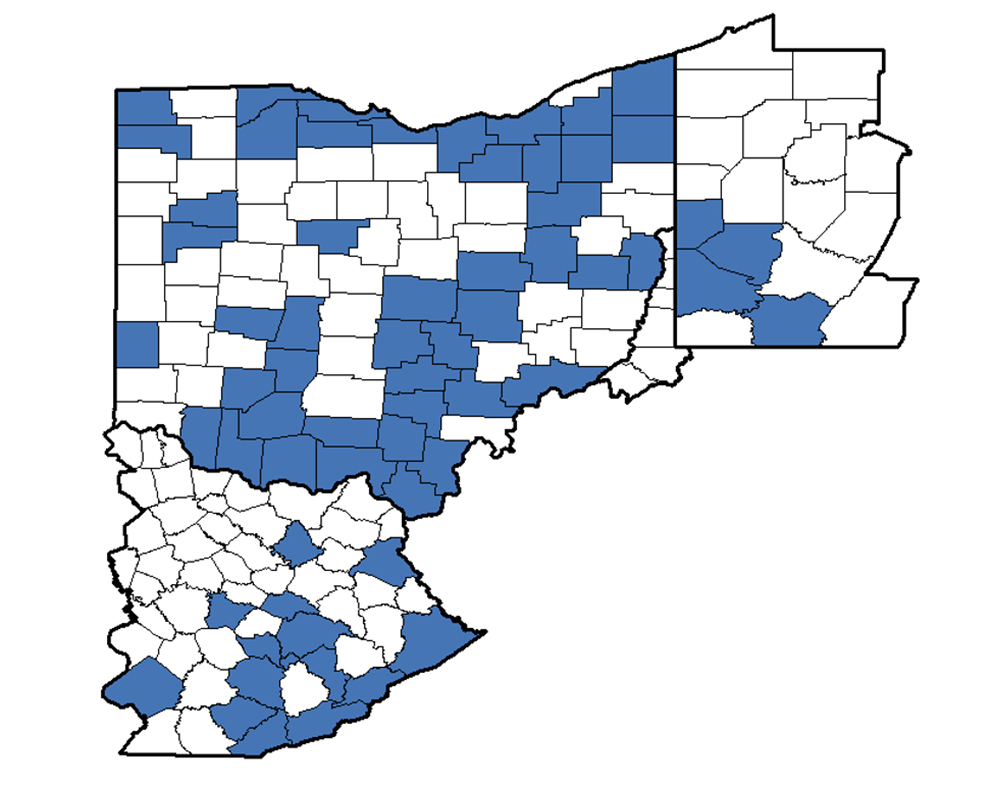- Share
Gathering Perspectives on Work in the Fourth District
To learn more about workers’ labor market experiences in the Fourth District, the Cleveland Fed conducted an online survey in the fall of 2024.
The views expressed in this report are those of the author(s) and are not necessarily those of the Federal Reserve Bank of Cleveland, other Reserve Banks, or the Board of Governors of the Federal Reserve System.
Introduction
One of the Federal Reserve System’s main jobs is to keep an eye on US economic conditions to further its mission of promoting price stability and maximum employment. The 12 regional Reserve Banks that are part of this System support this mission by gathering and looking at data from the regions they serve. In addition to using economic indicators (“hard data”), the Reserve Banks also use “soft data” (such as information gathered through surveys) to better understand local economies.
Patrick T. Harker, president of the Philadelphia Fed, describes the importance of using both hard and soft data to keep tabs on economic conditions: “Hard data are essential to our understanding of the economy. But soft data offer an opportunity to further connect the dots when it comes to explaining how workers in low-wage positions, specifically, make decisions around work.”1 Similarly, Cleveland Fed president Beth M. Hammack states that “an important role for the Reserve Banks is collecting data and anecdotes from their Districts to complement official statistics.”
We sought to gather soft data by learning more about workers’ labor market experiences in the Fourth District, the region served by the Cleveland Fed that includes Ohio and parts of Kentucky, Pennsylvania, and West Virginia. To do so, we partnered with workforce development groups and nonprofits to conduct an online survey in the fall of 2024. We leveraged existing relationships and formed new ones with workforce groups because these groups tend to serve low- to moderate-income (LMI) individuals who are looking for work or upskilling. This targeted approach allowed for a focus on organizations that serve LMI populations. In total, nearly 250 people responded to the survey from 63 of the 169 counties in the Fourth District.2 We asked a variety of questions, but specifically, we wanted to know more about
- What aspects of their jobs do workers value most?
- What were (or are) the biggest challenges when looking for a job?
- What are their expected labor market activities and actions in the coming months?
This work is an extension of the Worker Voices Project (WVP), which focused on the labor market experiences of nondegree-holding workers during the pandemic.3 The soft data obtained through the WVP suggested that these workers struggled during the pandemic and that a strong postpandemic labor market did not necessarily benefit all workers. Many local workforce development stakeholders found this line of inquiry around worker experiences valuable to their efforts and expressed that the Federal Reserve System was uniquely positioned to continue gathering this type of information.
Findings

Note: Counties with at least one respondent are highlighted in blue.
What aspects of their jobs do workers value most?
In our online survey conducted in the fall of 2024, we asked respondents a variety of questions about their labor market experiences, including whether they have multiple jobs and what they value most in their jobs. Nine of 10 survey respondents indicated that they have at least one job, with the vast majority stating that they work in the service sector. Respondents earned $23.50 an hour ($48,880 per year) on average.
Workers who responded to the survey (regardless of education level) indicated that what they valued most in their primary job was access to benefits such as health insurance, followed by wages, flexible scheduling, and the mission of the organization.
Some workers praised their employers and indicated that they enjoyed their work and work environment. One respondent indicated, “I enjoy where I am working now, because I am treated as a valued employee . . . [my employer] makes sure their employees are looked after and treated very well.”
Roughly one in five workers reported having multiple jobs. Many of these multiple jobholders classified their supplemental work as “gig work” and cited flexible scheduling as the most important factor for this work. Secondary jobs generally fell into nonplatform-based gig work categories such as “firefighter,” “property manager,” or “retail sales.”4
What were (or are) the biggest challenges when looking for a job?
Some respondents noted challenges in finding jobs that offer benefits and provide wages high enough to cover living expenses. One respondent described turning down a job based on the hiring process:
I have declined a job offer in the last 12 months because . . . they offered me an insulting wage with no vacation time or benefits. It’s so frustrating to be told one thing and when push comes to shove not to be fairly compensated as advertised.
Respondents reported other challenges, as well. One respondent noted that “a lot of jobs are advertised, but not being filled” and that “the human factor has been removed from this initial screening process.” Another respondent described how the available jobs in their area do not align with their skills: “[A]s an educated community member . . . it is hard to find roles and occupations that align with [my] education and training.” Another respondent indicated how intensive the job search can be and how that can sap motivation. “Looking for a job is like having a full-time job. It is very easy to get discouraged, and I understand why and how people give up.” A respondent with a felony conviction simply stated that “most jobs don’t hire felons.” Overall, these comments reflect worker sentiments captured in the Worker Voices research.5
What are their expected labor market activities and actions in the coming months?
Beyond respondents’ current labor market experiences, we wanted to know what their next steps would be in their labor market journey. More than half of employed respondents indicated that they were unlikely to search for jobs, accept a different job, or stop working entirely in the next three months. Of those respondents who indicated that they planned to look for new or additional employment, some mentioned that the rising cost of living and healthcare expenditures were taxing their budgets. Here are two examples:
“Need more income. Health insurance is expensive with high deductibles. My job was outsourced and the job I was transferred to does not match my skill set and may be outsourced as well.”
“The cost of living is so high, and I am a single mother on one income.”
Meanwhile, another respondent looking for a job indicated that they are “always looking for new opportunities” to improve their situation.
Conclusion
Overall, our survey shed light on what Fourth District workers value most about their jobs, with respondents citing benefits as an important component of overall compensation. Furthermore, one out of every five respondents said that they held multiple jobs, which were typically gig work. In terms of challenges, respondents cited searching for and obtaining jobs that can support household budgets as a key obstacle. Finally, regarding their next steps, most workers said that they did not expect to make any major changes to their labor market status in the near future.
This survey complemented our data-driven approaches to monitoring economic conditions while providing valuable and timely insights to inform our understanding of how the current economy is impacting workers in our District.
Thank You to Our Partners
Footnotes
- https://fedcommunities.org/what-learned-talking-workers/ Return to 1
- The survey was open from September 1 to December 1, 2024. This survey is a convenience sample based on respondents who elected to participate, and remuneration was not offered. This survey is not a representative sample of our District or the broader population. Respondents were more likely to be white, female, and not living in a metropolitan county than national averages for working-age populations. The difference in representation in our sample may reflect the populations that our workforce partners and nonprofits serve. Return to 2
- https://fedcommunities.org/research/worker-voices/ Return to 3
- Platform-based gig work is defined as gig work that is brokered through an online intermediary such as ride-hailing and grocery shopping platforms. For more information, see Worker Voices Special Brief: Self-Employment, Dreams Versus Reality. Return to 4
- https://fedcommunities.org/research/worker-voices/ Return to 5

Community Development
Supporting low- and moderate-income communities in the Fourth District is a cornerstone of our mission at the Cleveland Fed. Find out how our Community Development team is promoting access to good jobs, housing, and credit for the residents within our district.
About Us
The Federal Reserve Bank of Cleveland (commonly known as the Cleveland Fed) is part of the Federal Reserve System, the central bank of the United States.



